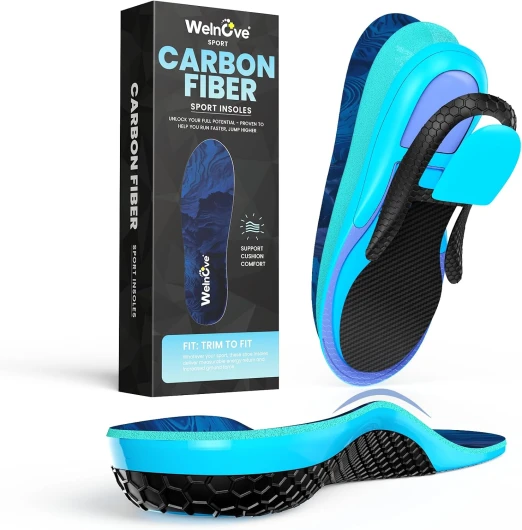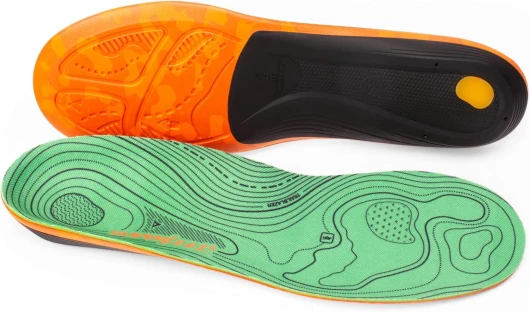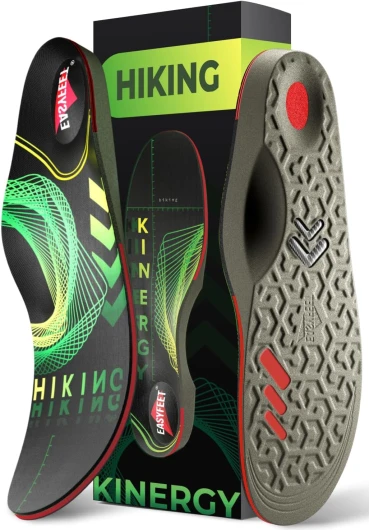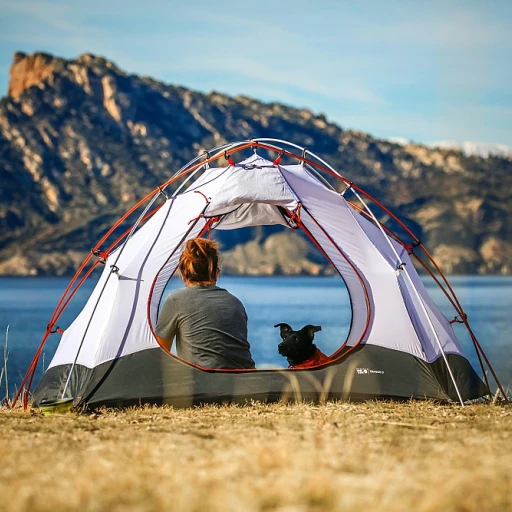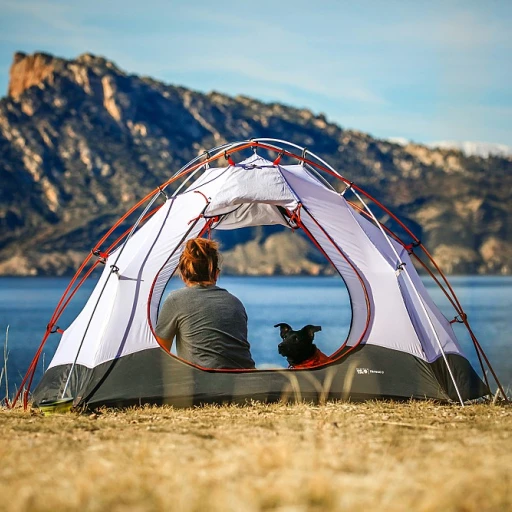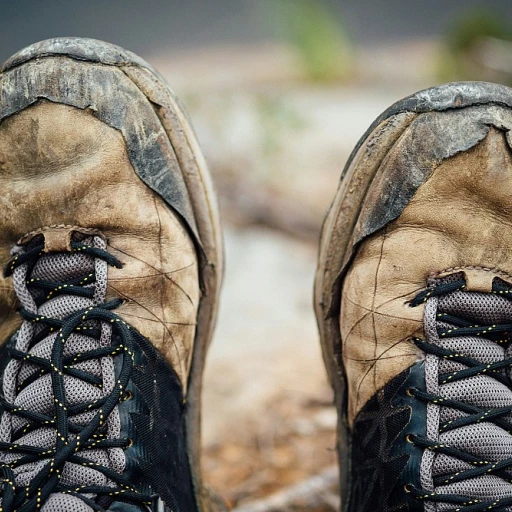
Understanding the Importance of Insoles in Hiking Boots
The Role of Insoles in Hiking Comfort
In the realm of outdoor adventuring, the right insoles can be a game-changer, transforming a good hiking experience into a great one. Your feet, the unsung heroes, bear the brunt of every step you take, making the support and padding provided by insoles crucial. Properly fitted insoles in your hiking boots can significantly enhance not only comfort but also the overall performance of a trek. Insoles are designed to offer additional cushioning, arch support, and maintain a snug fit inside the boots. Whether you’re grappling with high arches or flat feet, the variety in designs and materials ensures that there’s a perfect match for every hiker's needs. Utilizing quality insoles like superfeet or gelactiv insoles can mitigate common hiking discomforts, such as plantar fasciitis or heel pain, by offering tailored support and shock absorption. Moreover, different types of insole materials, from foam to more advanced custom orthotics, influence their cushioning and durability. Foam insoles typically provide a softer feel, while others might focus on structural support to accommodate high arch or deep heel cups. Choosing the best insoles doesn’t just stop at comfort. Factors like odor control and material durability are pivotal for long excursions on rugged terrains. Making the right choice can prevent foot-related injuries and reduce post-hike soreness, ensuring your hiking shoes fit perfectly every time. For more insights on enhancing your hiking experience, check out the advantages of using gelactiv insoles.Key Features to Look for in Hiking Insoles
Features of Hiking Insoles
When selecting hiking insoles, focusing on a few key characteristics can significantly enhance your hiking experience. Here are the critical features to consider:- Support and Cushioning: Hiking exerts pressure on your feet, making support and cushioning paramount. Insoles like Superfeet offer targeted cushioning to help with shock absorption, providing comfort across uneven terrains.
- Arch Support: Crucial for those with high arcs or flat feet, proper arch support can make or break your hike. Look for insoles that cater specifically to your foot's arch height for optimum comfort and reduced strain.
- Heel Cup and Deep Heel Design: The right heel cup ensures stability by keeping your heel correctly aligned. A deep heel is especially beneficial for hikers dealing with plantar fasciitis.
- Material Durability: Consider insoles made from high-quality materials offering foam durability with maximum comfort. A sole active design can adapt to your foot's shape, providing long-lasting fit and support.
- Size and Fit: Insoles come in various sizes, including specific sizes for women. Ensure the fit is snug within your hiking boots or shoes to avoid annoying movement during hikes.
- Odor Control: Many hiking insoles incorporate odor control properties, ideal for keeping your boots fresh during long hikes.
Comparing Different Types of Insoles
Exploring Various Insole Categories
With a wide array of hiking insoles available, choosing the right one can be a daunting task. Within the realm of insoles, not every product suits every hiker’s needs and knowing what’s out there is key to finding the best match for your hiking boots.
Cushioned Insoles
Cushioned insoles prioritize comfort, offering soft foam layers designed to distribute pressure evenly across the foot. These are excellent for hikers seeking high cushioning with each step, helping to minimize the impact on longer hikes. While they offer impressive shock absorption and comfort, they might not provide sufficient support for those with high arches or flat feet.
Supportive Options
Supportive insoles focus on offering greater structural reinforcement, particularly if you experience discomfort due to conditions like plantar fasciitis. The sole active feature often includes a deep heel cup and substantial arch support to ensure your foot remains aligned while navigating varied terrains. These types excel when stability and support are paramount, especially for those with high arches.
Custom Orthotics
For a truly personalized fit, custom orthotics are molded specifically to your foot’s measurements, addressing distinctive support needs and cushioning preferences. This option is ideal for individuals with unique foot shapes or severe alignment issues that off-the-shelf products might not adequately alleviate. However, the price can be significantly higher compared to standard insoles.
Comparing Superfeet and Other Trusted Brands
Recognized as a leading name in hiking insoles, Superfeet insoles offer a range of products catering to varying needs, from odor control and high arch support to tailored fits based on women’s or men’s sizes. Other notable brands also emphasize durability, comfort, and diverse fits, providing essential support in hiking shoes or boots alike. When assessing the best fit for your needs, consider the specific materials employed, cushioning levels, and the heel and arch height support they provide.
Insole Sizes and Materials
Understanding size variations is crucial for finding insoles that perfectly fit your hiking boots. Manufacturers often offer several sizes, including options tailored for sizes women and other specific foot needs like flat feet. Moreover, materials play a role in durability; options like durable foam and high-quality cushioning can enhance the lifespan and performance of insoles, making them a wise investment for avid hikers seeking substantial returns on comfort and longevity.
For a comprehensive guide on choosing footwear or understanding the differences in hiking environments, check out resources on choosing the right footwear.
Top Recommended Insoles for Hikers
Top Picks for Hiking Enthusiasts
Exploring the right insoles can transform your hiking endeavors by providing the necessary support and comfort. Here are some top recommended insoles that outdoor enthusiasts swear by:- Superfeet Green: Renowned for its exceptional arch support and deep heel cup, this insole is perfect for those with high arches looking for stability during their hikes. Its durable foam materials ensure longevity and efficient odor control, making it suitable for long hiking trips.
- Sole Active Medium: A great option for hikers needing balanced support and cushioning. This insole adapts to your foot shape, providing comfort for medium to high arch feet. It's particularly effective in absorbing shock, making it a favorite among those trekking on uneven terrains.
- Powerstep Pinnacle: Ideal for addressing plantar fasciitis and flat feet, these insoles offer remarkable heel support. The foam cushioning provides extended comfort without compromising on foot stability. Perfect for hiking boots that require additional foot support.
- Scholl GelActiv: When cushioning is a top priority, these insoles are admirable for their gel technology that delivers soft yet resilient support, specially designed for women's sizes. These insoles are perfect for those who prioritize comfort over extensive arch height support.
- Dr. Scholl’s Custom Fit Orthotics: These insoles are especially beneficial for those requiring personalized fit and high-level support for pressure relief. The customizable nature helps accommodate diverse hiking shoes and boot types, offering tailored comfort.
How to Choose the Right Insole for Your Hiking Boots
Choosing the Perfect Fit for Your Hiking Needs
Selecting the right insole for your hiking boots is crucial to ensure comfort and support while adventuring. Here are some aspects to consider:- Arch Support and Shape: Understanding your arch type—be it high, medium, or flat—is essential. For those with high arches, insoles with strong arch support or a deep heel cup could provide better balance and comfort. On the other hand, flat feet may benefit from insoles that offer stable arch support and shock absorption.
- Cushioning and Materials: Comfort during hikes is significantly impacted by the level of cushioning your insoles provide. Whether you prefer the softness of foam or a more firm support from durable materials, make sure that the insole's cushioning aligns with your hiking needs.
- Foot and Heel Considerations: The best insoles should cater to specific needs like plantar fasciitis or heel pain by offering targeted support. Brands such as Superfeet insoles often address these with specially designed heel cups or support high insole models.
- Size and Fit: Ensuring that your insoles fit your unique shoe size and shape is essential. Sizes for women and men can differ, so checking compatibility with your hiking shoes is necessary. Insoles that don't fit well can lead to discomfort and reduced durability.
- Customization and Price: Custom orthotics might be worth considering if standard insoles don't meet your expectations. Though pricier, they provide tailor-made solutions for the most comfortable hiking experience.
Caring for Your Insoles to Extend Their Lifespan
Preserving Insoles for Longevity
Proper care and maintenance can significantly enhance the lifespan of your hiking insoles, ensuring continued support for your feet on the trail. Consider the following tips:- Dry Thoroughly: After a hike, remove the insoles from your boots and let them air dry completely. Moisture can degrade materials over time. Avoid direct sunlight or extreme heat as these can cause warping or shrinkage.
- Clean Regularly: Depending on the material, gently clean your insoles with mild soap and water. This is particularly important for hiking insoles granting odor control features, as clean insoles can help maintain freshness.
- Inspect for Wear and Tear: Regularly check for signs of wear, such as thinning foam or failing arch support. High-quality insoles like Superfeet or custom orthotics can often be re-used with new shoes if still in good condition, but reduced cushioning and support can prompt replacement.
- Rotate Insoles: If you hike frequently, rotating between a couple of pairs can prolong the life of each. This also ensures consistent high comfort and support across different terrains and intensities.
- Store Correctly: When not in use, insoles should be stored flat in a cool, dry place to maintain their shape and support features, such as the deep heel cup and shock absorption capabilities.

